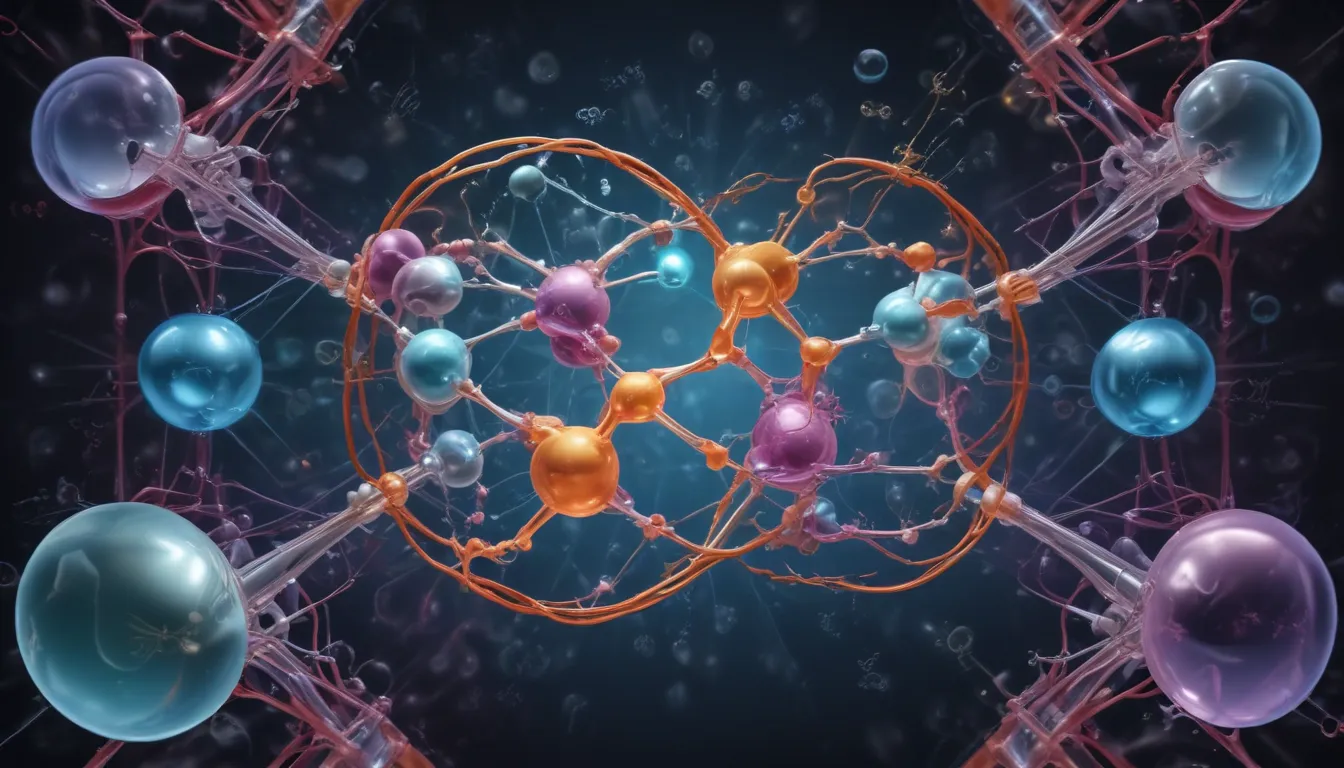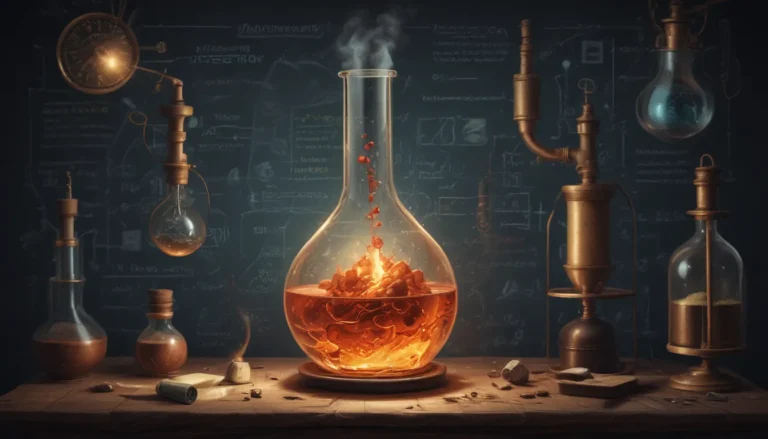A Note About Images: The images used in our articles are for illustration purposes only and may not exactly match the content. They are meant to engage readers, but the text should be relied upon for accurate information.
Welcome to the enthralling realm of coordination chemistry, where metal ions and ligands dance in harmony to create captivating coordination complexes. Exploring the intricate interactions and unique properties of these compounds opens a world of possibilities in various scientific fields. Join us on a journey as we delve into nine astounding facts about coordination chemistry, shedding light on its complexity and significance.
Unlocking the Mysteries of Coordination Chemistry
In the captivating world of coordination chemistry, ligands act as matchmakers for metal atoms, creating a kaleidoscope of coordination complexes with diverse properties. These complexes play a vital role in medicine, industry, and environmental protection, showcasing the versatility and potential of coordination chemistry in addressing real-world challenges.
The Enchanting Role of Ligands
Ligands, the unsung heroes of coordination chemistry, are molecules or ions that bind to central metal atoms or ions, forming intricate coordination complexes. This crucial interaction involves the donation of electrons from ligands to the metal center, laying the foundation for the formation and reactivity of these intriguing compounds.
Delving into Coordination Numbers
Each coordination complex boasts a coordination number, representing the number of ligands surrounding the central metal atom or ion. Ranging from 2 to 12 or beyond, coordination numbers influence the physical and chemical properties of the complex, unveiling a spectrum of characteristics and behaviors unique to each configuration.
Unveiling the Marvels of Transition Metal Complexes
Transition metal complexes take center stage in coordination chemistry, renowned for their ability to forge stable coordination bonds with ligands. This remarkable trait stems from the availability of d orbitals in the valence shell of transition metals, allowing for a diverse array of colors and magnetic properties to manifest in these captivating complexes.
Embracing the Art of Chelation
Chelation, a captivating process in coordination chemistry, involves the formation of complexes where a ligand binds to a metal ion through multiple donor atoms, creating a ring-like structure known as a chelate. Widely utilized in medicine, industrial processes, and environmental sciences, chelation underscores the versatility and applicability of coordination chemistry in diverse fields.
Diving into the World of Isomerism
Coordination compounds often exhibit various forms of isomerism, adding a layer of complexity and diversity to the field. Structural isomerism and stereochemical isomerism offer intriguing insights into the connectivity and spatial arrangement of atoms and ligands in coordination complexes, enriching our understanding of their structural nuances.
Unveiling the Catalytic Marvels
Transition metal complexes, renowned for their catalytic prowess, shine as chemical superheroes in the realm of coordination chemistry. Accelerating chemical reactions by lowering energy barriers, these compounds play a pivotal role in industrial processes and biological systems, unleashing a world of possibilities for enhanced efficiency and efficacy.
Admiring the Spectrum of Colorful Complexes
The vivid hues of coordination compounds mesmerize with their colorful display, a result of light absorption that reflects specific wavelengths, giving rise to a striking visual palette. The color of a complex is intricately linked to the nature of ligands and the metal center, painting a vivid picture of the diverse and enchanting world of coordination chemistry.
Pioneering Applications in Medicine
Coordination chemistry stands at the forefront of medicinal advancements, offering promising avenues for the treatment of various diseases, including cancer. Metal-based coordination complexes exhibit selective targeting of cancer cells, efficient drug delivery mechanisms, and enhanced therapeutic efficacy, underscoring their potential in revolutionizing healthcare.
Championing Environmental Conservation
In the realm of environmental sciences, coordination chemistry emerges as a powerful ally in combating pollution and environmental challenges. Metal complexes play a pivotal role in toxin removal from contaminated water, catalytic processes for environmental remediation, and detection of pollutants, offering sustainable solutions to global environmental concerns.
Unraveling the Tapestry of Coordination Chemistry
As we conclude our exploration of coordination chemistry, we are left in awe of the intricate interactions and boundless possibilities within this captivating field. From the discovery of new compounds to applications in medicine and environmental conservation, coordination chemistry continues to push the boundaries of scientific knowledge, inspiring us to delve deeper into its mysteries.
FAQs: Navigating the Intriguing World of Coordination Chemistry
Q: What is coordination chemistry?
A: Coordination chemistry explores the interactions between metal ions and ligands, forming coordination complexes with unique properties.
Q: What are coordination compounds?
A: Coordination compounds, or coordination complexes, involve a central metal ion surrounded by ligands bonded through coordination bonds.
Q: What are ligands?
A: Ligands are molecules or ions that donate electron pairs to form coordinate bonds with a metal ion, crucial in the formation of coordination complexes.
Q: What are some applications of coordination chemistry?
A: Coordination chemistry finds applications in catalysis, drug delivery, materials science, and bioinorganic chemistry, among others.
Q: How does coordination chemistry contribute to medicine?
A: Coordination compounds are instrumental in the development of drug molecules, offering targeted binding to biological targets for enhanced therapeutic outcomes.
Q: How does coordination chemistry contribute to environmental remediation?
A: Coordination compounds play a vital role in environmental cleanup, sequestering toxic metal ions and facilitating their removal from polluted sites.
Q: What are some future directions in coordination chemistry research?
A: Current research focuses on expanding the scope of coordination chemistry to non-traditional metals, developing new ligands, and exploring applications in sustainable energy and nanotechnology.
Embark on a journey of discovery in coordination chemistry, where each fact uncovers a new layer of complexity and wonder in the molecular realm. The allure of ligands, the symphony of colors in coordination complexes, and the transformative applications in medicine and the environment beckon you to explore further. Embrace the beauty and intricacy of coordination chemistry, and let its mysteries inspire you to unravel the secrets of the molecular world.
Sign Off: Keep Exploring and Learning with Confidence
At the heart of our commitment to delivering compelling and reliable content lies a dedication to accuracy, authenticity, and engagement. Each fact shared on our platform is a testament to the diverse insights and knowledge contributed by real users like you, ensuring a wealth of reliable information for all enthusiasts and learners. Trust in our unwavering pursuit of quality and trustworthiness as you venture into the boundless realms of science and discovery.






